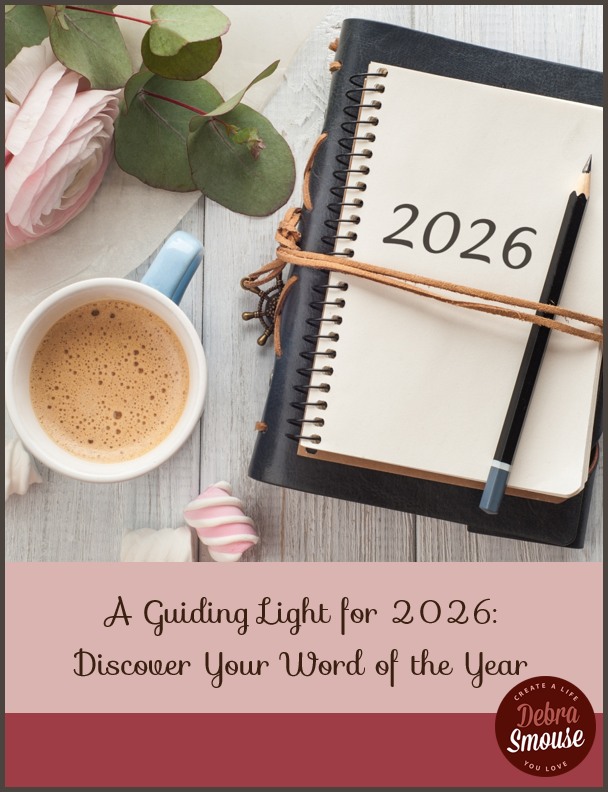Let’s be honest: if you’re here, you’ve probably been Googling “how to deal with guilt” while replaying that one little thing you said, did, or didn’t do. Maybe you told a friend “no” and now feel like the worst person on the planet. Maybe you took a nap instead of tackling the laundry, and your brain won’t stop whispering lazy. Or maybe you snapped at your partner, and now you’re drowning in self-blame. Welcome to the club. Guilt has a way of barging in uninvited and overstaying its welcome.
Here’s the truth: guilt isn’t always bad. A little guilt can help us course-correct when we’ve stepped outside our values. Too often, though, it snowballs into a full-on guilt spiral. That spiral drags you down, fuels shame, and convinces you that you are failing at life. The good news is that you don’t have to stay stuck in that cycle. There are practical, doable ways to stop feeling guilty, let go of self-punishment, and move forward with a lighter heart — especially if you’re someone who tends to put others’ needs ahead of your own or who has spent years shrinking yourself to avoid conflict, stay “nice,” or remain unseen.
One – What Guilt Really Is (and Why It’s Not Always Bad)
Guilt gets a bad rap, but at its core, it’s just a messenger. It shows up when you’ve crossed one of your personal values or think you’ve let someone down. Sometimes, guilt is useful. It nudges you to apologize when you forgot a birthday or motivates you to fix a mistake at work. That kind of guilt is short-lived and constructive.
The problem is that guilt often overstays its welcome. Instead of being a quick reminder, it camps out in your head and turns every small slip into proof that you’re failing as a human. This is where the difference between healthy guilt and toxic guilt matters.
-
- Healthy guilt says: “I messed up, but I can fix it.”
- Toxic guilt says: “I don’t deserve forgiveness because I’m flawed.”
One keeps you accountable. The other keeps you stuck. And if you’re a habitual people-pleaser, toxic guilt can feel like a permanent companion. The trick on learning how to deal with guilt is learning to spot which one you’re dealing with. Before it spirals. Guilt can also act like a thief, quietly stealing your presence and energy, keeping you small and unseen even when you’re doing the right thing for yourself. Recognizing this is the first step in reclaiming both your self-trust and your visibility.
Two – The Guilt Spiral and Why It Feels Endless
If you’ve ever replayed an awkward conversation in your head on repeat, you already know what a guilt spiral feels like. It starts with something small: missing a workout, snapping at a child, saying no to a request. Instead of moving on, your mind latches onto it.
The spiral usually follows a pattern:
-
- Guilt whispers that you should have done better.
- Shame kicks in and tells you you’re a bad person.
- Self-punishment through overthinking, over-explaining, or over-doing.
- The spiral tightens, and suddenly you feel guilty about feeling guilty.
This cycle can last hours, days, or even weeks if you let it. And because it feeds on repetition, the longer you stay in it, the deeper it digs in. And you can feel as if you’ll never learn how to deal with guilt!
Signs you’re caught in a guilt spiral:
-
- You can’t stop replaying what happened.
- Mistakes get blown out of proportion.
- You assume everyone else is judging you as harshly as you judge yourself.
- Punishment is your way to deal with guilt and you deny yourself joy, rest, or connection.
Here’s the kicker: most of the time, nobody else is thinking about your mistake. They’ve already moved on. The only person keeping the spiral alive is you. For people-pleasers, the spiral can feel like invisibility — shrinking yourself, apologizing preemptively, overexplaining your choices, or trying to anticipate everyone else’s judgment just to stay safe.
But the truth is that your presence, your voice, and your choices matter exactly as they are, even if guilt tells you otherwise.
Three – How to Deal with Guilt in the Moment
So what do you do when guilt pops up and threatens to spiral? You stop it at the source. Here’s how to deal with guilt and that spiral:
-
- Pause and breathe. Your nervous system needs a second to calm down before your brain writes its drama script. Even three deep breaths can reset your body’s panic button.
- Reality check. Ask yourself: Did I actually do something wrong, or am I just afraid of judgment? Nine times out of ten, the guilt comes from imagined expectations, not reality.
- Name it. Say it out loud: “I feel guilty for saying no.” Naming your guilt separates you from it instead of letting it silently fester.
- Offer compassion. Try a line like: “I’m human. I made a choice. That doesn’t make me a bad person.”
How to stop feeling guilty right now: When the guilt voice pipes up, talk back. Remind yourself that setting a boundary, resting, or making one mistake does not erase your worth. By interrupting the thought loop, you short-circuit the spiral before it has a chance to spin. Each time you do this, you are practicing self-trust, proving to yourself that your needs and your presence are valid and that you deserve to occupy space without apology.
Four – Long-Term Strategies for Letting Go of Guilt
Quick resets are powerful, but lasting change happens when you re-train how you relate to guilt in the first place. So, here’s how to ensure you learn tools on how to deal with guilt.
-
- Reframe it. Guilt is a signal, not a verdict. Feeling guilty doesn’t automatically mean you did something wrong.
- Strengthen boundaries. Saying no without guilt takes practice. Each time you do it, you prove to yourself that people won’t abandon you just because you prioritize your own needs. Boundaries are proof that your presence matters, and that your life is not only about fulfilling others’ expectations.
- Write it out. Journaling is a way to get the guilt out of your head and onto paper. Ask yourself:
- What value do I think I violated?
- Am I holding myself to a standard no one else could meet?
- What advice would I give a friend in this exact situation?
- Shift from punishment to repair. If you really did make a mistake, skip the self-beating and move straight into repair mode. Apologize, adjust, or recommit. Then move on.
How to let go of guilt and move forward: Treat guilt like a guest at your door. Listen for a second. If it has something useful to say, take the note. If not, politely shut the door and get back to living.
Five – Common Guilt Triggers (and How to Handle Them Without Shame)
Guilt is sneaky. Knowing where it tends to hide makes it easier to deal with guilt. And stop before it takes over:
-
- Rest and self-care. Guilt loves to whisper that taking a break is lazy. The truth is that rest keeps you functioning at your best. Taking time for yourself doesn’t mean you’re failing; it means you’re human.
- Relationships. Feeling guilty for not doing “enough” in marriage, parenting, or friendships is usually perfectionism talking. Ask yourself: “Enough according to who?” Most people just want your presence, not perfection. When guilt whispers that your presence isn’t enough, remind yourself that you are seen when you show up authentically, not when you overextend yourself.
- Work and productivity. Overworking or checking emails nonstop doesn’t prove your value — it erodes it. Boundaries protect your energy so you can actually perform better when it counts.
- Everyday choices. Even small things like buying a treat for yourself, skipping an event, or taking a mental health day can trigger guilt. Recognize these feelings for what they are: imagined judgment, not reality.
The bottom line: guilt often shows up when you’re doing the right thing for yourself. That’s a sign you’re moving in the right direction, even if guilt tries to make you feel invisible or unworthy.
Six – When Guilt Masks Something Bigger
Sometimes guilt isn’t about the immediate mistake at all. It’s a disguise for deeper issues:
-
- Guilt and anxiety. Anxiety convinces you that one slip could ruin everything. When your guilt comes with constant worry, it’s often more about fear than reality.
- Guilt and perfectionism. Holding yourself to impossible standards guarantees guilt as a default soundtrack. Soften your expectations to quiet the noise.
- Guilt and shame. Guilt says, “I did something bad.” Shame says, “I am bad.” If your guilt feels crushing and personal, shame is lurking underneath.
When to seek support: If guilt is stealing your sleep, clouding your days, or making you feel like you’re never enough, reach out to a therapist, coach, or trusted friend. Carrying guilt forever isn’t a badge of honor. Letting it go is.
So How Do You Deal with Guilt?
Remember that You Don’t Have to Live in a Guilt Spiral.
Guilt will always try to creep in, but it doesn’t have to run your life. Learning how to deal with guilt and recognizing when it’s trying to drag you into a spiral gives you permission to breathe, reset, and enjoy your days.
Setting boundaries, saying no without guilt, and forgiving yourself for being human are all ways to chip away at the shame cycle — without punishing yourself.
Let’s be real: moving past guilt isn’t about magically never feeling it again. It’s about responding differently when it shows up. Notice it, name it, and examine whether it’s serving you or just taking up space in your head. Ask yourself: Is this guilt coming from a real misstep, or is it perfectionism, fear of judgment, or old habits of self-criticism?
Then choose a response that actually moves you forward. That might look like taking a few deep breaths, journaling, setting a clear boundary, or making a simple repair if something truly went wrong. Every small action chips away at the power guilt holds over your mind.
Over time, as you practice these strategies, you’ll notice the spiral loosening its grip. Rather than wondering how to deal with guilt, you’ll know that it’s a signal, not a sentence. You reclaim your energy, your joy, and your freedom. You’ll find yourself living more fully in the present instead of replaying the past. You’re not failing. You’re learning. You’re growing. You’re showing up. You’re being seen. And that is exactly how you break free from the guilt spiral once and for all.
Want to ditch the guilt spiral and learn more tips to love your life?
Snag a free workbook and get inspiration on all the ways to love your life even more.
>>Click Here to Discover More Ways to Love Yourself and Your Life <<









